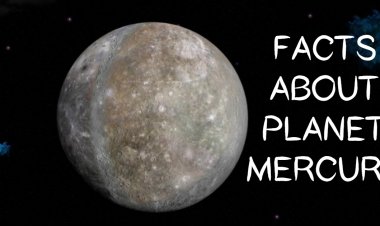Mercury facts
Mercury, the closest planet to the Sun, is the smallest and fastest planet in the solar system – orbiting the Sun every 88 Earth days.
Mercury is the closest planet to the Sun, but perhaps surprisingly its temperature is not the highest. It is the second densest planet in the solar system, but also the smallest. The structure of Mercury makes it a planet similar to Earth..
Key facts and summary
- Since Mercury can be seen without the need for binoculars, many ancient civilizations have seen the planet, and so it is impossible to determine who first discovered it. However, it was first seen by Galileo Galilei in the early 17th century with the help of a telescope.
- Galileo’s crude telescope was unable to capture the phases of Mercury, an observation made later by astronomer Giovanni Zupi in 1639, and he thus discovered that the planet also has phases similar to those of Venus and the moon.
- In ancient times, Mercury was taught as two different objects in the sky: the mourning star and the evening star. In the case of Venus, it was also mistaken for two different things.
- Venus spends most of her time away from Earth. This, by contrast, makes Mercury the closest planet to Earth, the most abundant of all time.
- Mercury was named after the Roman messenger god, because of its rapid motion around the sun .
- Mercury is the closest planet to the Sun at 57.91 million km / 35.98 miles or 0.4 AU. The journey from the sun to Mercury takes 3.2 minutes of sunlight.
- Despite being close to the Sun, it is not the hottest planet, this is the address of Venus, but Mercury is the fastest planet, which completes one revolution around the Sun in 88 days. One year on Mercury equals 88 days on Earth, the shortest year on any planet.
- It orbits the sun at a speed of about 29 miles or 47 kilometers per second.
- Despite being the smallest terrestrial planet in the solar system, and in fact the smallest of all planets, it is the second most dense planet in the solar system.
- For comparison, Mercury is about one-third the size of Earth, and Earth’s density is 5.51 g / cm³ .
- Mercury has a radius of 2.439 km or 1516 miles, and a diameter of 4.879 km or 3.032 miles .
- Mercury’s axis has the smallest inclination of any planet in the solar system at about 1⁄30 degrees, while its orbital eclipse is the largest of all known planets in the solar system .
- Mercury’s distance from the Sun is only two thirds or 66% of the distance in its aphelion, on its aphelion it is 0.44 AU away from the Sun .
- At its closest distance, or Perry Helen, it is 0.30 AU away from the sun.
- Mercury rotates slowly on its axis and completes one rotation every 59 Earth days. One Mercury solar day or one full day night cycle is equal to 176 Earth days – more than just two years on Mercury. (Reminder, Mercury has 88 Earth days a year) .
- Mercury does not have a well-known satellite or color system.
- Its surface is very similar to that of the Earth’s moon, which means that the planet has not been geologically active for many years .
- Instead of the atmosphere, Mercury has a thin outer sphere made up of atoms that are blown from the surface by solar wind and striking meteorites. Mercury’s outer sphere consists mostly of oxygen, sodium, hydrogen, helium and potassium .
- Mercury’s magnetic field is in opposition to the planet’s equator. Although the magnetic field at the surface is only 1.1% of the Earth’s strength, it interacts with the solar wind’s magnetic field and sometimes produces intense magnetic storms that carry the fast, warm solar wind plasma to the planet’s surface.
- Mercury rotates in a way that is unique to the solar system. It is enclosed in a 3: 2 revolving orbit with the sun .
- Mercury and Venus revolve around the Sun in Earth’s orbit, making them inferior planets.
